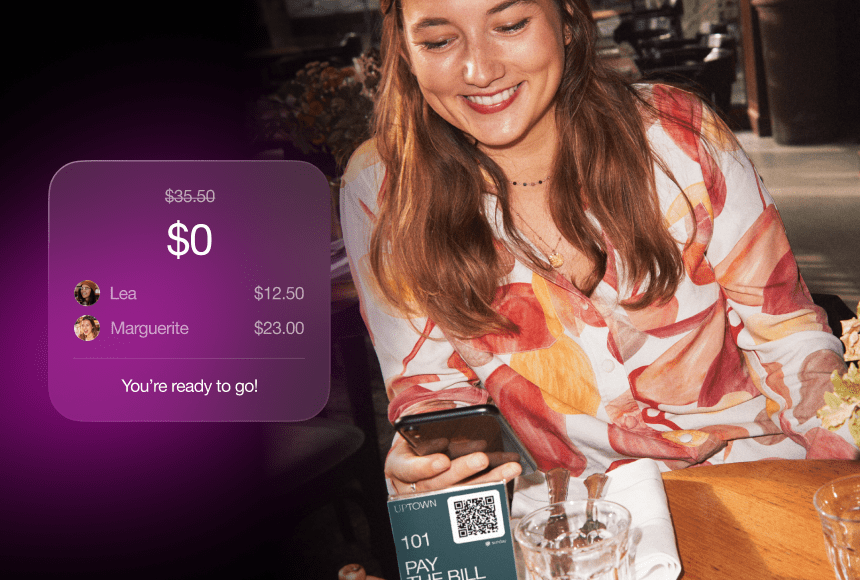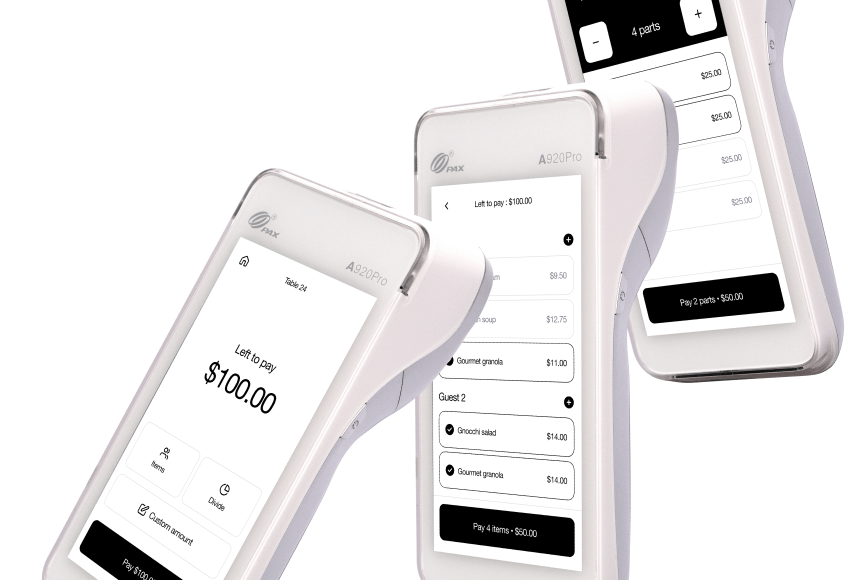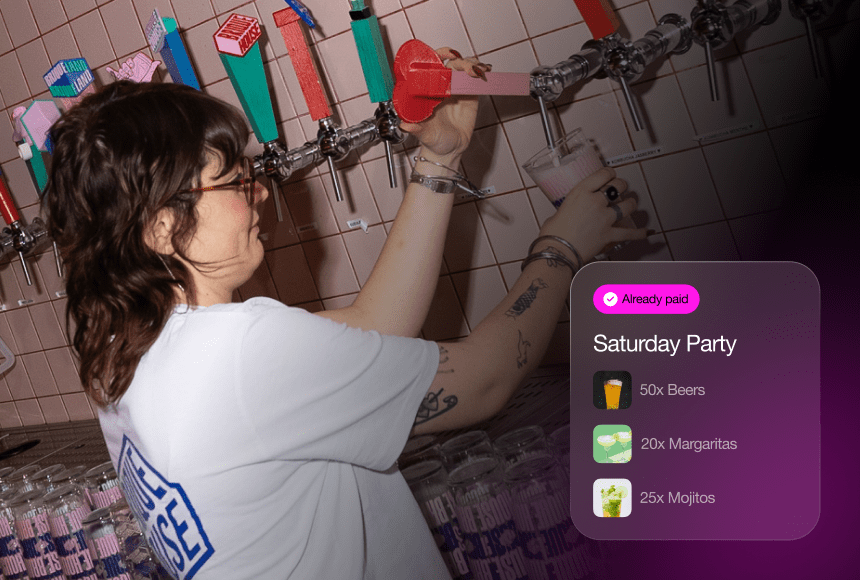
Turning Skeptics into Fans: How to Address Customer Worries About QR Code Payment
The Rise of QR Code Payments—and the Pushback
Modern diners increasingly expect speed and convenience. That’s why QR code payments—letting customers scan, tip, and finalize their bill via smartphone—have become a must-have in today’s restaurant landscape. According to the National Restaurant Association, more than half of U.S. restaurants now employ some form of digital or contactless solution. Yet, not all customers jump on board without hesitation. Some voice concerns about privacy, technology, or the loss of that personal server touch.
So how do you welcome these guests into the QR code era? The key is balancing cutting-edge convenience with genuine reassurance and human warmth. Below, we’ll explore the top hurdles diners mention—plus how to navigate them smoothly, so you can make your QR code payment experience a driver of loyalty rather than a source of frustration.
1. “Is My Card Information Safe?”
Security tops the list of reservations many diners have. Handing a physical card to a server may feel risky, but at least it’s a familiar process. Scanning a code on a table and entering card details into a website? That can seem like uncharted territory for some.
- Highlight Encryption and Trusted Providers: When working with a secure platform like sunday, let customers know all transactions are encrypted. A brief mention—“We use secure, encrypted channels to protect your data”—goes a long way.
- Display Visible Cues: Show a padlock icon or the HTTPS address. Most diners know these symbols suggest a trusted, standard security protocol.
- Reassure with Familiar Brands: If your system links to recognized payment gateways (e.g., Stripe, PayPal), mention it. Familiar logos reinforce that you’ve partnered with well-regarded services.
Ultimately, transparency is key. Outline the steps taken to protect personal data and make that info prominent, rather than burying it in fine print.
2. “I Don’t Have the Right App or the Patience to Download One”
No one wants to clutter their phone with yet another app—especially for a quick meal. Diners might feel uneasy or annoyed if scanning your QR code opens a download link instead of a simple browser page.
- Opt for a Browser-Based Experience: If at all possible, let customers pay directly via their phone’s default browser. This way, scanning the code leads to an instant webpage—no signups or installs required.
- Highlight “No App Needed” on Signage: Many guests will happily give QR payments a try if it’s quick and app-free. Make that perk clear on your table tents or instructions.
- Consider a Backup for Non-Smartphone Users: Older diners or those with basic phones might be left in the dark. Offering a printed check or portable card reader ensures you’re not pushing them away.
By removing extra hoops to jump through, you reduce friction. The shorter the path to payment, the more likely customers are to adopt it—and appreciate it.
3. “I’d Rather Talk to a Server Than Deal with My Phone”
One hallmark of dining out is hospitality. Some diners worry that technology will overshadow or replace that friendly, personal connection with staff. If they suspect you’re pushing QR code payments to cut corners, they may resist.
- Frame It as an Enhancement, Not a Replacement: Explain how freeing staff from check-running tasks can lead to more meaningful interactions and better service. “Our server can now spend more time guiding your menu choices rather than running receipts.”
- Keep Servers Available: If a diner wants a recommendation, the staff should still be around to help. Make sure your team knows scanning a code doesn’t mean stepping away from the table entirely.
- Allow Seamless Human Assistance: If a guest struggles with the process or prefers a standard check, staff should step in quickly with a smile, not a sigh. That gracious fallback prevents friction and bad impressions.
In short, technology should complement, never replace, the personal hospitality that makes restaurants special.
4. “I’m Not Tech-Savvy—This Sounds Complicated”
Even if phone scanning is second nature for some, not every diner feels comfortable with digital interfaces. Others worry about messing up an order or selecting the wrong tip.
- Clear Step-by-Step Guidance: Use short, friendly text or simple icons explaining how to open the camera, point at the code, and tap the payment page. Avoid jargon like “QR scanner” or “URL.” A basic “Open camera and hold it over the code” can do wonders.
- Simple Payment Flows: Once they access the website, make sure the interface is clean. They should see an itemized bill, an obvious place to tip, and a final “pay” button—no complicated submenus.
- Offer a Demo for Interested Guests: Servers can do a quick demonstration if a diner is curious but intimidated. Just 10 seconds of help can transform a skeptic into a fan.
The easier your platform is to navigate, the fewer fears customers will have about stumbling or making errors. Minimize the steps, and you maximize success.
5. “Won’t Scanning Random Codes Put Me at Risk?”
Phishing scams and malicious QR codes do exist. Some customers have heard horror stories of scanning a random code that led to suspicious websites or viruses. Your challenge is to give guests the confidence that your code is legitimate.
- Branded QR Placards: Instead of sticking a generic black-and-white code on the table, incorporate your restaurant logo or color scheme. A professional design signals authenticity.
- Use a Recognized Domain Name: If your code opens a page with a suspicious URL, diners may back away. Ideally, the link should reference your official site or a well-known payment partner like sunday.
- Prominently Mention Safety: A small statement—“Securely powered by [Payment Provider]”—can reassure them your system is vetted.
When customers feel safe scanning your code, they’re more likely to do so without hesitation. Clear branding and reputable hosting create trust at first glance.
6. “I Don’t Want to Lose the Art of Tipping Face-to-Face”
Tipping can be awkward, and some guests worry digital systems might push them into higher tips or remove the personal gesture of handing cash to a server.
- Present Tipping Options Gently: Provide suggested percentages like 15%, 18%, and 20%, plus a custom field. Avoid overbearing prompts—like pop-ups that scold a low tip.
- Clarify the Gratuity Split: If you pool tips among staff, a quick note (“Your tip helps our whole team!”) can resonate. Guests are often more generous when they see how their tip is distributed.
- Ensure Servers Can Still Say Thanks: Encourage staff to check in after the payment. A sincere “We appreciate your tip—thank you!” preserves that sense of gratitude customers value.
When digital tipping is as transparent as handing over a physical tip, diners typically feel comfortable—and might even tip more. The key is to keep it genuine, not transactional.
7. “I Worry About My Phone Battery or Data Connection”
Some guests arrive with a phone at 10% battery or discover they’re in a cellular dead zone. If QR code payment is the only option, they might panic.
- Offer a Backup Solution: Keep a few physical checks or a card reader for those with battery or connection issues, ensuring no one is stuck.
- Provide Accessible Wi-Fi: Post the network name and password visibly. If your walls block cell signals, robust Wi-Fi coverage is a must.
- Quick Payment Flows: The fewer steps your QR code system requires, the less battery drain or data usage. Minimizing unnecessary screens or animations helps.
Reassure visitors who worry about phone readiness that they can still pay the old-fashioned way if needed. That safety net helps them trust your new system is purely an option, not a trap.
8. “It Feels Like a Gimmick—Is There Really a Benefit?”
Diners might wonder if you introduced QR code payment just because it’s trendy. If they suspect the main motive is to cut staff or push convenience on you (not them), they may resist.
- Explain the Guest-Focused Perks: Emphasize time savings: “This keeps you from waiting around at the end of your meal.” Or highlight safety: “No more passing credit cards.”
- Mention Real-Life Scenarios: Share how large groups can split the bill easily, or how a busy lunch crowd can pay fast and return to work. These examples show tangible value.
- Keep It Casual: Avoid marketing hype like “Revolutionary Payment Experience!” A simple approach—“Scan, tip, go”—feels more relatable and genuine.
If diners see the practical advantage for them, they’ll label your system as helpful, not gimmicky. Let the benefits speak for themselves, and skepticism tends to fade.
9. “What If I Make a Mistake While Paying?”
Some diners dread pressing the wrong button or confirming a payment accidentally. The more complicated your interface, the bigger this fear grows.
- Build a Simple UX: The user experience should offer clear confirmations: “Your total is $XX.XX. Proceed?” Possibly include a final screen to review tip amounts before finalizing.
- Add an ‘Undo’ Step: If a guest selects the wrong tip or forgets to remove an item, let them backtrack easily. “Cancel Payment” or “Edit” buttons keep them in control.
- Make Support Visible: Place a note: “Need help? Ask your server!” That way, diners know a real person can step in if they get stuck.
Confidence stems from clarity. When the design anticipates slip-ups and provides quick fixes, diners feel safer exploring the digital realm.
10. “Will I Lose My Personal Connection to the Restaurant?”
Loyalty in dining often hinges on human interaction—knowing the bartender by name, exchanging banter with a favorite server. Some regulars fear technology might erode that sense of warmth.
- Encourage Staff to Socialize: By removing time-consuming payment tasks, your servers can actually spend more quality moments at tables, chatting or giving recommendations.
- Integrate Loyalty Programs Thoughtfully: If you have a loyalty system, highlight it as a benefit of the QR approach (“Earn points automatically!”) rather than a forced step. That way, regulars feel recognized and rewarded, preserving their connection.
- Keep a Human Touch at Checkout: Even if the last step is tapping on a phone, servers can circle back for a friendly farewell, ensuring the final vibe is personal, not purely digital.
Technology should enable better relationships, not replace them. By clarifying how QR codes free up staff, you soothe worries of losing that cherished personal touch.
11. Handling Misinformation and Myths
Customers sometimes hear rumors like “QR codes are always collecting my data” or “Once you scan, they can hack your phone.” Dispel these myths by:
- Publishing a Brief FAQ: A small online or table-side Q&A, addressing security and privacy in plain language, can quell misinformation.
- Being Upfront About Data: If your platform logs basic info—like order details or tip amounts—explain how you use it (e.g., better menu planning), and that you don’t store sensitive payment data yourself.
- Leveraging Staff Knowledge: Train servers to respond to common myths gently. “Actually, your payment is fully encrypted—nobody here can see your card details.”
Transparency and an easy-to-access knowledge base help customers feel at ease, even if they arrive with half-truths or misconceptions.
12. Overcoming the “Not Another Screen” Complaint
Some diners already feel bombarded by screens—at home, at work, on their commute. If they see your QR code system as just more screen time, you might face resistance.
- Focus on Time Savings: Emphasize that scanning to pay is quick, so they can get back to chatting with friends or enjoying dessert, not stuck waiting for a check.
- Make It One-Tap and Done: The fewer pages and prompts, the shorter the phone usage. A smooth interface means diners won’t be glued to the screen for long.
- Provide a Tangible Option: If a customer truly wants a traditional check or to hand over a card, that’s okay. By not forcing a phone-based process, you accommodate preference differences.
Reminding diners that this digital step replaces a wait—rather than adding an extra digital chore—helps them see the net benefit.
13. Continuous Staff Training and Engagement
Your staff are the face of this system. If they can’t answer questions or don’t believe in the convenience factor, diners sense the disconnect. Keep employees motivated and informed by:
- Explaining the “Why”: Show them how QR payments can increase tips, reduce mistakes, and let them serve more tables. This fosters enthusiasm.
- Encouraging Feedback: If servers notice guests frequently stumbling at a certain step, gather that feedback to refine the interface or instructions.
- Highlighting Success Stories: Share quick wins—like a large party praising how easy it was to split the check. Celebrating positive moments keeps staff excited and supportive.
If your team wholeheartedly endorses the process, they’ll proactively guide diners and handle objections cheerily, boosting overall adoption.
14. Softening the Learning Curve with Gentle Nudges
When introducing a fresh payment method, some customers may be uncertain or forget that this option exists. Subtle reminders help:
- Tabletop Prompts: “Ready to pay? Scan the QR code at your convenience!” prevents them from waiting for a server to bring the bill.
- Server Mentions: During check-in or after delivering mains, staff can say, “Just a reminder, we have a QR code on your table for easy payment—if you’d like to try it.”
- Printed Menus or Receipts: If you still offer a paper menu, a small mention at the bottom like “Save time at checkout with our QR payment” can be enough to pique interest.
Light, friendly nudges reassure diners that digital payment is not only permitted but encouraged, nudging them to give it a shot even if it’s their first time.
15. Partnering with a Seamless Solution
Finally, not all QR code platforms are created equal. A glitchy setup can intensify objections. Pairing with a credible provider like sunday helps ensure:
- Intuitive Interface: sunday’s user flow is known for simplicity—no hidden steps or confusing pop-ups to scare off novices.
- Secure Transactions: End-to-end encryption and a trusted brand name soothe worry about data theft or card misuse.
- Loyalty & Feedback Options: Built-in tools let you capture real-time guest feedback or offer loyalty perks, reinforcing positive experiences.
By choosing an established, reliable platform, you tackle many potential complaints at the source—ensuring the system’s reliability, speed, and user-friendliness.
Building Trust, One Scan at a Time
Adopting QR code payment isn’t just about being tech-savvy or saving paper. It’s about designing a faster, more transparent, and user-centric checkout experience that can genuinely enhance customer loyalty. Yet, it’s natural for some diners to harbor doubts. They may fear a loss of personal service, wonder about security, or dread complicated signups.
By clearly communicating the benefits, offering a fail-safe for those who prefer traditional methods, and empowering your staff to handle questions with confidence, you can convert these skeptics into satisfied fans. Small touches—like a branded, well-placed QR code, or a brief note on data encryption—work wonders. And once they realize how simple it is to scan, tip, and head out, many diners will appreciate the streamlined convenience.
Ultimately, your approach should champion the diner’s perspective. Showcase how QR code payments enhance—rather than replace—warm hospitality. Done right, you’ll overcome initial objections gracefully, forging a payment process that’s both cutting-edge and guest-friendly, while partners like sunday provide the stable, intuitive backend to make it all click.
Find out more today
Drop us your details below and we’ll reach out within the next 24h
“Check please” is a thing of the past.
With our integrated QR codes your customers pay in seconds, straight from their table.




